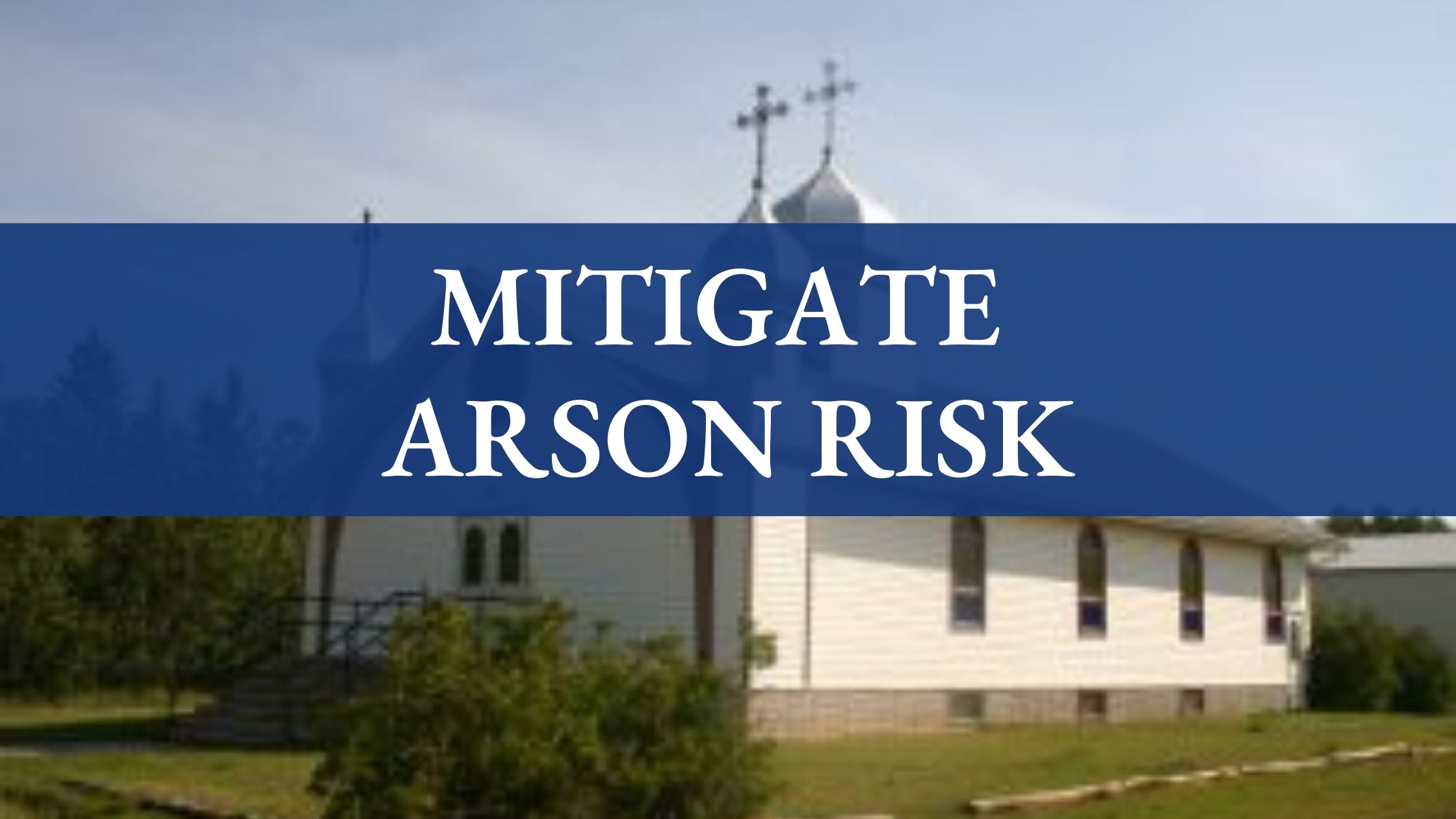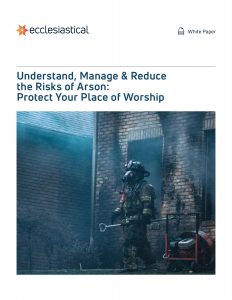
Discovery of the unmarked burial sites at the former residential school at the Cowessess First Nation and the Tk’emlúps te Secwépemc First Nation has been front and centre in the media. Three churches have been lost due to arson fires and there is concern more losses are imminent. We have had a robust arson risk management in place for a number of years and we would like to highlight some important information from the manual.
STEP 1:
Maintenance and regular inspection of the building and grounds to minimize the opportunities for arson.
To remain vigilant particularly for any signs of vandalism as this is often a precursor to arson
- Ensure there is no combustible material lying around for an arsonist.
- Do not let garbage accumulate inside or outside the building.
- Garbage cans should be kept in their own locked compartment or kept well away from the church.
- Matches, candles, candle oil, and gasoline can all be used to start a fire. Keep all such materials locked away.
- Trim back hedges and shrubs so that they do not provide either a hiding place or a fuel source.
- If you do see someone on the church grounds that is behaving suspiciously do not confront them. Try to make yourself visible to them from a safe distance and then contact the churchwatch liaison. They will be responsible for contacting the police if it is deemed necessary.
STEP 2:
Institute the use of an “End of the Day” checklist
The person responsible for security should carry out these checks at the end of each day:
- No combustible material or flammable liquids left lying around.
- No unauthorized person left on premises.
- Garbage cans are locked away.
STEP 3:
Development of a Churchwatch Program.
A churchwatch program can be a simple, effective way for a congregation to protect it’s church. The program is a commitment by participants to bring supervision of the church into their regular routine and consists of participants agreeing to walk/drive by the church on a regular basis. A person must be the designated contact for the program and it is more convenient for them to live close to the church. This person should liaison with local police and the fire department.
Local Community Police Liaison Officer
Anger and resentment is understandable but when this spills over into significant property damage including fire then that impacts the safety and security of both the community and the emergency first responders which is why engagement with the fire and police authorities is essential at this time. Parishes are encouraged to reach out to their local police to seek their guidance to assist in preventing vandalism and arson to church property. The police will be able to provide much practical advice around vigilance and reporting any instances of vandalism however minor.
Media Enquiries
Parishes are reminded that should they be approached by the media that any and all enquires are to be handled through your respective chanceries so as to avoid provoking a possible response involving vandalism or arson.


